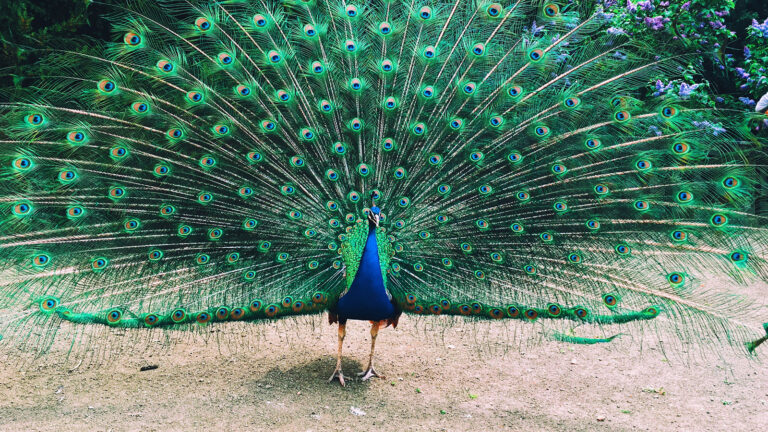The peacock, a bird renowned for its vibrant and intricate plumage, is one of nature’s most mesmerizing creatures. With its iridescent feathers and dramatic displays, the peacock has captured the imagination of cultures around the world for centuries. This article delves into the beauty and significance of the peacock’s feathers.
The Splendor of Peacock Feathers
One of the most striking features of the peacock is its elaborate feathers. The male peacock, known for its extravagant plumage, uses its feathers to attract mates. These feathers, adorned with eye-like patterns in shades of blue, green, and gold, create a stunning display when fanned out. The vivid colors and intricate designs are the result of microscopic structures that reflect light, producing an iridescent effect that changes with the angle of viewing.
The Purpose Behind the Plumage
The peacock’s feathers serve a crucial role in courtship rituals. During the mating season, the male peacock will spread its tail feathers into a large fan, showcasing its vibrant colors to nearby females. This display is not just about aesthetics; it is also a sign of health and vitality. A peacock with brighter, more colorful feathers is often seen as more attractive and is likely to have better genetics, making it a preferable choice for a mate.
Cultural Significance and Symbolism
Peacock feathers have been revered in various cultures for their beauty and symbolism. In Hinduism, the peacock is associated with the goddess Saraswati, who represents wisdom and learning. The feathers are also considered a symbol of protection and are often used in rituals and decorations. In ancient Greece, the peacock was linked to the goddess Hera, symbolizing immortality and renewal.
The Science Behind the Beauty
The peacock’s feathers are not just a marvel of nature but also a subject of scientific interest. Researchers have studied the structure of the feathers to understand how they produce such vivid colors without pigments. The feathers contain microscopic structures that interfere with light waves, creating the iridescent effect. This phenomenon, known as structural coloration, has inspired innovations in materials science, leading to the development of new technologies that mimic these natural processes.
Threats to Peacock Populations
Despite their beauty, peacocks face threats in the wild. Habitat loss and hunting have reduced their populations in some regions. Peacocks are often hunted for their feathers, which are used in fashion and decoration. Conservation efforts are crucial to protect these magnificent birds and ensure that future generations can continue to marvel at their splendor.
Conclusion
The peacock and its feathers are a testament to the wonders of nature. From their role in mating rituals to their cultural significance and scientific interest, peacock feathers are more than just a visual delight. They are a symbol of beauty, health, and the intricate balance of the natural world. Protecting these birds and their habitats is essential to preserving the legacy of one of nature’s most stunning creations.
